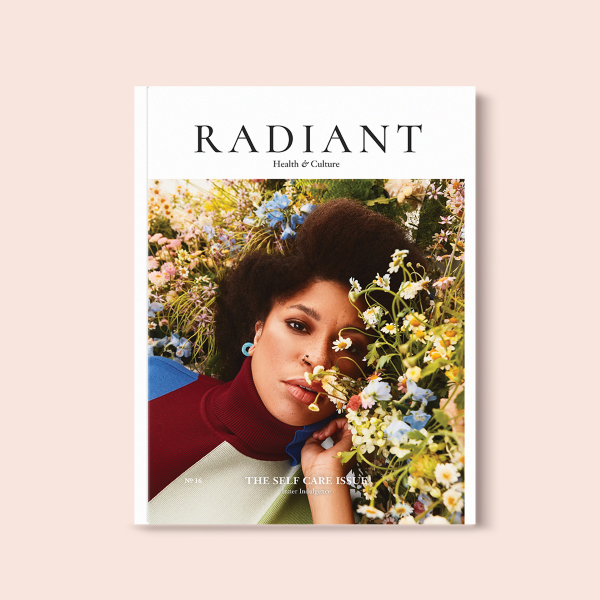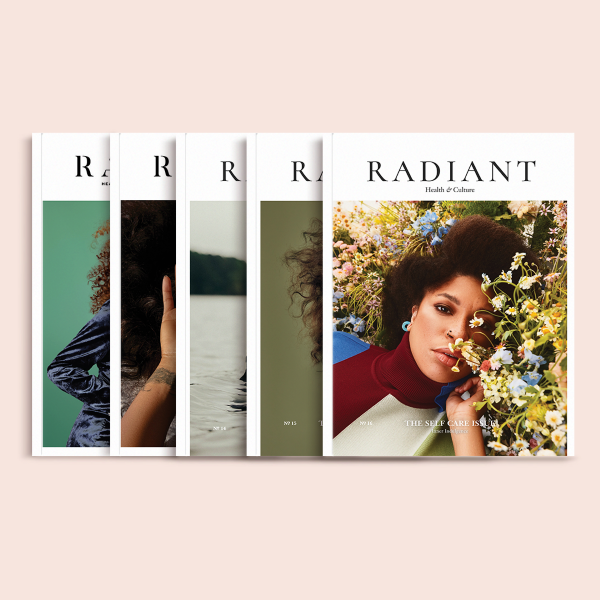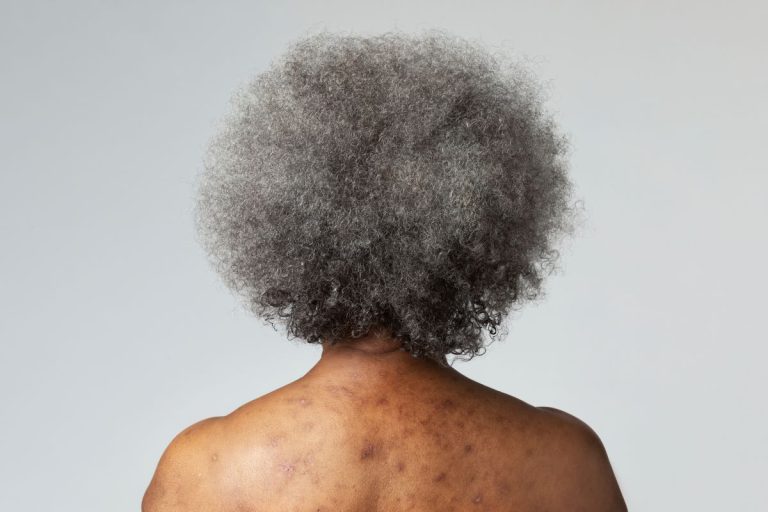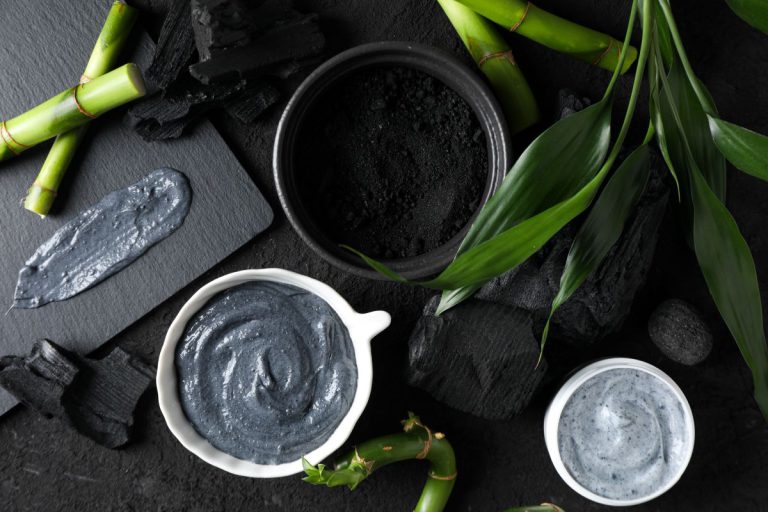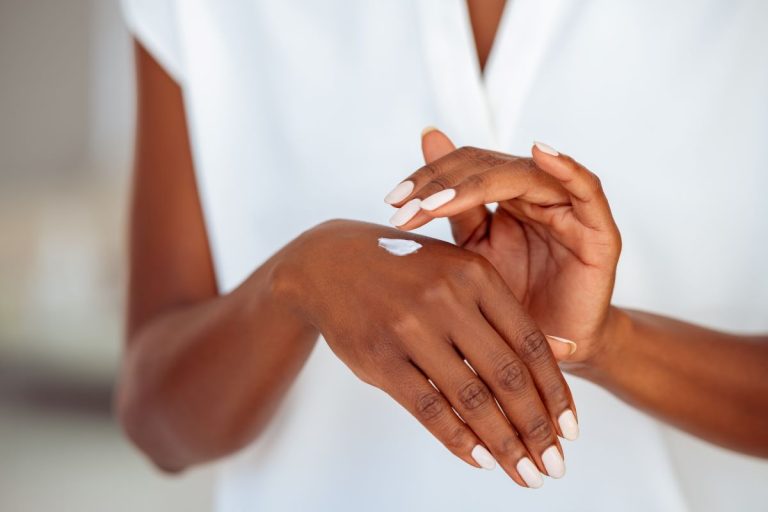Toxic Chemicals in Braiding Hair: What Every Black Woman Should Know
A new Consumer Reports study found toxic chemicals in synthetic braiding hair, but that doesn’t mean giving up your protective styles. Learn more about the report and how to braid safer.

Braids are deeply rooted in Black culture, dating back centuries to our homeland, Africa. These styles offer versatility, can be worn for several weeks, and require less time for daily maintenance. However, is the hair we use giving us more than just a protective style?
Alarming findings from Consumer Reports reveal that Kanekalon, a popular type of braiding hair, may contain toxic chemicals that are hazardous to our health.
What’s Really in Our Braiding Hair?
Earlier this year, Consumer Reports reported toxic chemicals in braiding hair. The idea to test these products came from Chrystal Thomas, a student at Albert Einstein College of Medicine and the City University of New York. After getting braids installed, she began to experience symptoms like throat irritation, sleep disturbances, and difficulty concentrating. She removed her braids a week and a half later, researched the chemicals in the braiding hair, and decided to share her findings in a commentary article published in 2023.
Scientists at Consumer Reports tested 10 popular synthetic braiding hair products for toxic chemicals like heavy metals and volatile organic compounds (VOCs).
Here’s what they found:
- Carcinogens (chemicals that might cause cancer): Detected in 100% of the samples.
- Lead: Detected in 90% of the products.
- Acetone (a type of VOC): Detected in 100% of the tested products.
These findings highlight a bigger issue—the lack of proper regulation in beauty products targeting Black consumers, which raises serious concerns about the long-term health risks and the need for better consumer safety standards.
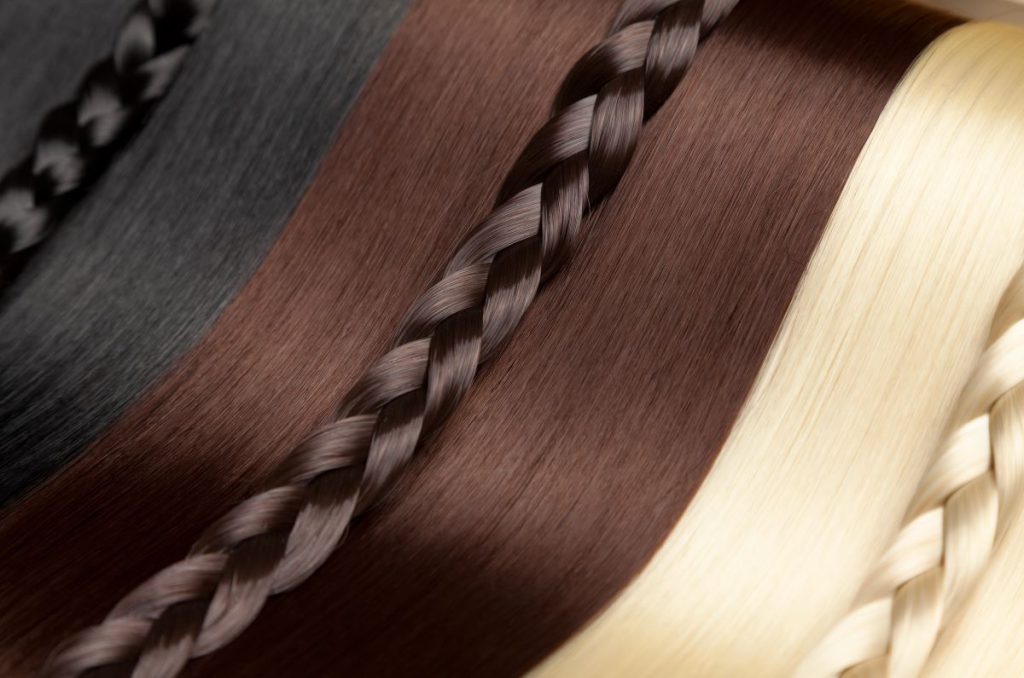
Which Braiding Hair Brands Were Tested and What They Found
Consumer Reports listed the following brands and types of braiding hair with toxic chemicals:
- Darling (Flexi Rod Curls Crochet, 14”)
- Debut (Wavy Hair Weave, 20”)
- Hbegant (Afro Twist Pre-Fluffed Wrapping Hair, 24”)
- Magic Fingers (3X Pre-Stretched Braiding Hair, 52”)
- Sassy Collection (100% Kanekalon Jumbo Braid)
- Sensationnel (Lulutress Crochet Braid Passion Twist, 12”)
- Sensationnel (Ruwa 3X Pre-Stretched Kids Braid 12”)
- Sensationnel (X-Pression 3X Pre-Stretched Braid, 58”)
- Shake-N-Go (FreeTress 3X Pre-Stretched Braid 301, 34”)
- Shake-N-Go (Organique Mastermix Water Curl Weave, 30”)
The tested products were made of Kanekalon, a type of synthetic or fake human hair.
Related Articles
Who’s Most at Risk—And Why It Matters
While toxic chemicals in braiding hair can impact anyone, some people are more susceptible to the risks, especially if there’s repeated or long-term exposure.
1| Black women
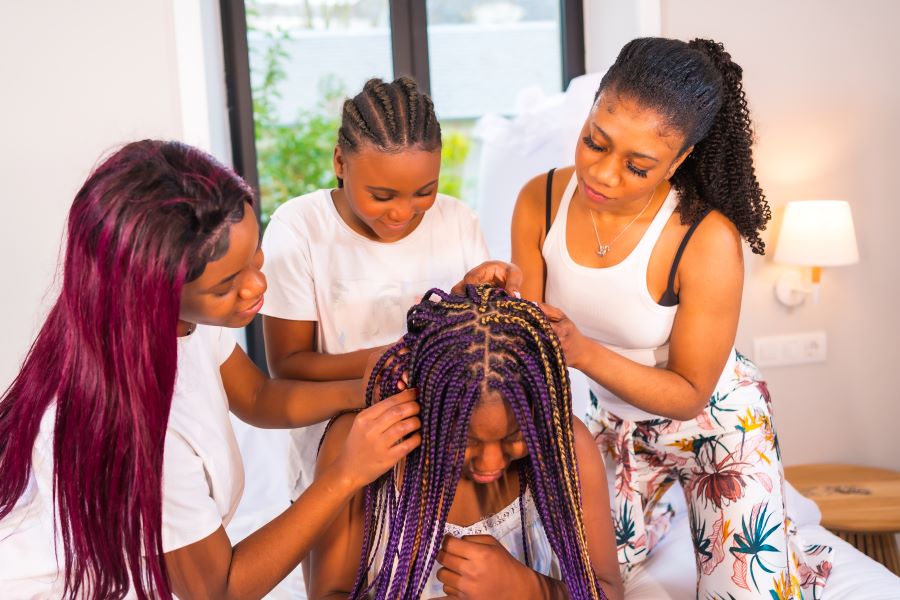
Black women are the main consumers of synthetic braiding hair, so they’re more likely to be exposed to harmful chemicals. Long-term, repeated exposure to these synthetic chemicals—often starting from a young child and continuing to adulthood—combined with fewer regulations of products marketed to Black people creates compounded health risks that are usually unrecognized and unaddressed.
2| Pregnant people and those trying to conceive
Many of the harmful chemicals are endocrine disruptors, which are natural or artificial chemicals that can interfere with the functioning of the body’s endocrine system. Endocrine-disrupting chemicals (EDCs) can impact growth, development, and reproduction.
EDCs can negatively affect fetal development and maternal health. According to research, these chemicals may cause adverse pregnancy outcomes and long-term complications, such as fetal growth retardation, thyroid dysfunction, and neurological disorders.
3| Children and teens
Kids and teens may wear braids frequently for easy upkeep and convenience during school, summer break, sports, and other activities. However, their developing systems can make them more susceptible to the toxic chemicals in braiding hair. Plus, their long-term exposure can add up as they get older.
4| People with skin or chemical sensitivities
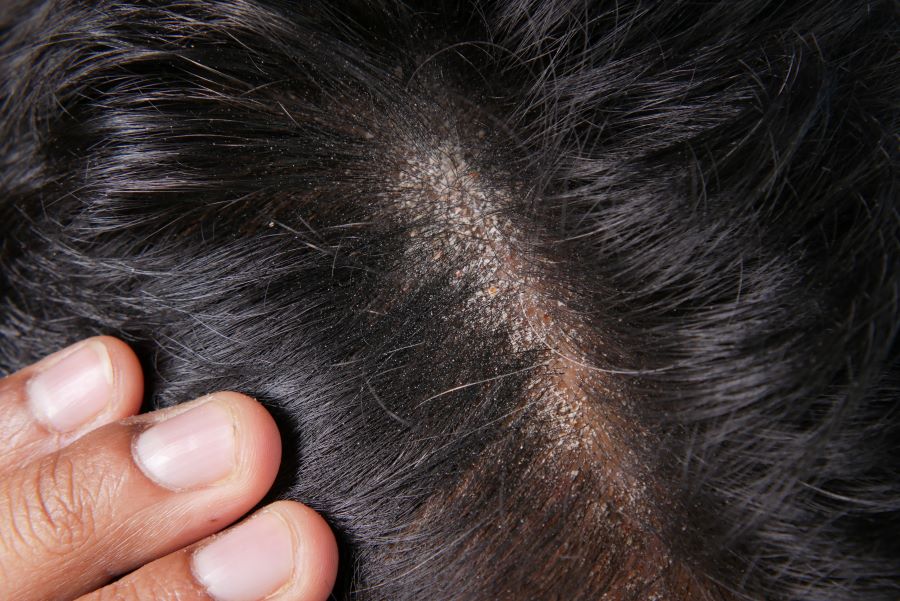
If you’ve ever experienced scalp irritation after getting braids installed, such as itching, burning, or redness, you’re not alone. Allergic contact dermatitis is a common side effect of synthetic braiding hair and other hair care products. People with eczema, allergies, or asthma may respond more to the synthetic fibers or chemicals that companies use to treat the hair.

How to Protect Yourself Without Giving Up Braids
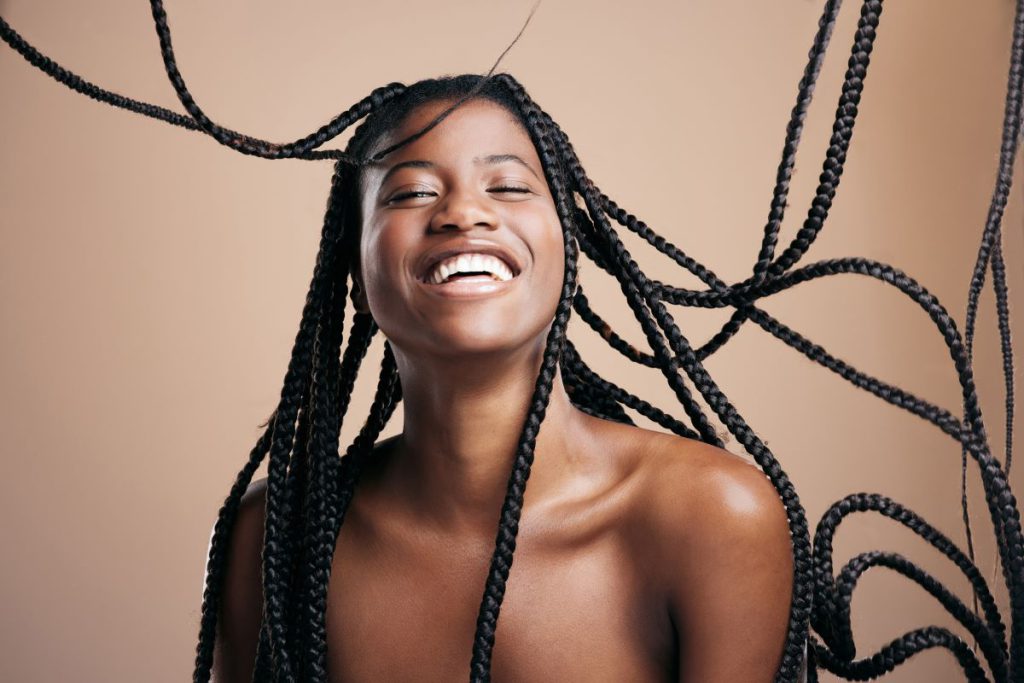
As scary as this might sound, we’re not asking you to give up braids entirely. However, you’ll want to be more cautious about the products you use on your scalp to reduce the risk of unwanted health problems.
Here are some tips for protecting yourself from toxic braiding hair:
1| Use MedWatch
MedWatch is a free resource through the U.S. Food and Drug Administration (FDA) that shares safety alerts for FDA-regulated products. Although braiding hair is not currently being regulated, any recalls of the products will still be shared here.
2| Wash the hair before installing
If you use synthetic hair, be sure to soak it before installation to reduce chemical exposure. Many stylists recommend a DIY soak of apple cider vinegar diluted in water. After soaking for 15 to 30 minutes, wash the hair with shampoo (preferably sulfate-free), rinse, and allow it to dry for 24 to 48 hours before use.
You can also ask your braider to wash the hair if they’re supplying it for your hairstyle.
3| Seek non-toxic braiding hair or organic braiding hair
Kanekalon is not the only braiding hair out there on the market. Several companies sell organic braiding hair that’s hypoallergenic, lab-tested, plant-based, and made of real human hair. Some notable brands selling non-toxic braiding hair products are Nourie, Ruka, LAB by Lillian Augusta Beauty, and Dosso Beauty.
Quick FYI: there’s no regulation on what’s considered “non-toxic” braiding hair, so make sure to review the brand’s website or packaging for details to confirm it contains no toxic ingredients.
Does Braiding Hair Cause Cancer? Here’s the Truth
While there’s proof that synthetic braiding hair can contain carcinogens, it doesn’t automatically mean you’ll develop cancer from wearing braids. Currently, there’s no direct link between synthetic hair and cancer.
This Isn’t New: A New Pattern in Hair Product Safety
Unfortunately, this isn’t the first time we’ve heard that Black hair products might be dangerous for our health. In fact, a 2024 study revealed that using hair relaxers four or more times a year led to a higher incidence of endometrial cancer. Black women are more likely to be diagnosed with and twice as likely to die from this cancer type.
So, what does this study and the latest findings on synthetic braiding hair mean for Black women? With the lack of regulations and likely racial discrimination at play, the issue of toxic chemicals in hair products may continue to be a threat to Black women’s health for the foreseeable future.
Where to Learn (And Take Action)
If you want to be more informed and push for safer beauty standards for Black women, check out the following resources:
- Environmental Working Group (EWG): EWG’s Skin Deep Database contains information about the ingredients of almost 130,000 personal care products.
- Black Women for Wellness: An advocacy group that aims to protect the health and well-being of Black women and girls by promoting environmental justice and sharing information about toxic exposures in beauty products.
- MedWatch: If you experience any adverse effects from synthetic braiding hair, report it to your healthcare provider and the FDA’s MedWatch.
Reclaiming Our Crown with Safety in Mind
Braids are a significant part of Black culture, and the community should be able to wear their crown without exposing themselves to harmful chemicals. With research continuing to reveal the dangers of certain Black hair care products, it’s crucial to stay informed, research products, and take precautions to lower your risk of chemical exposure.
While nothing happens overnight, advocating for safer products can lead to better government standards and regulations for these hair care products.

